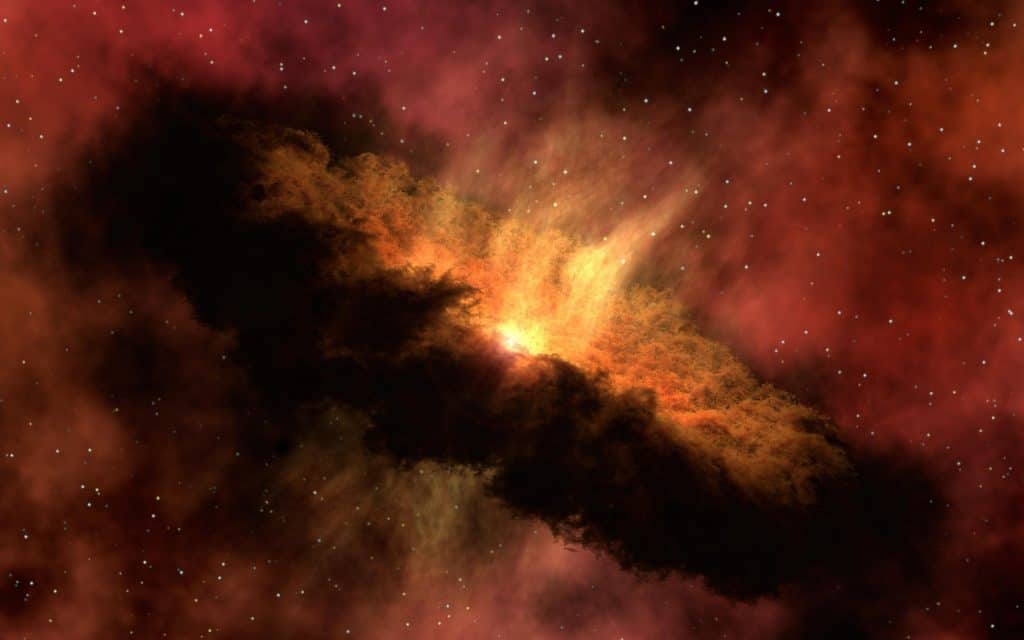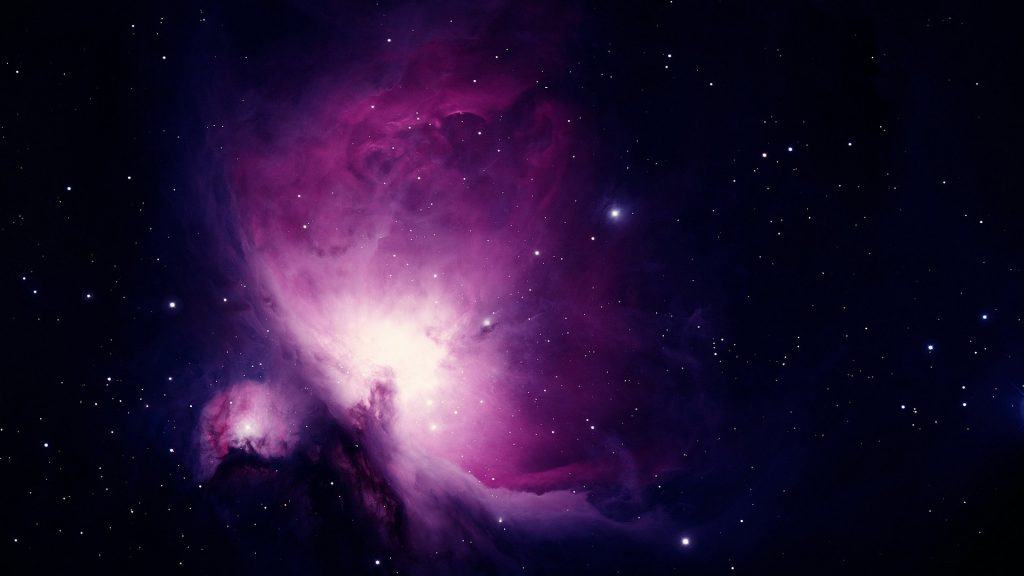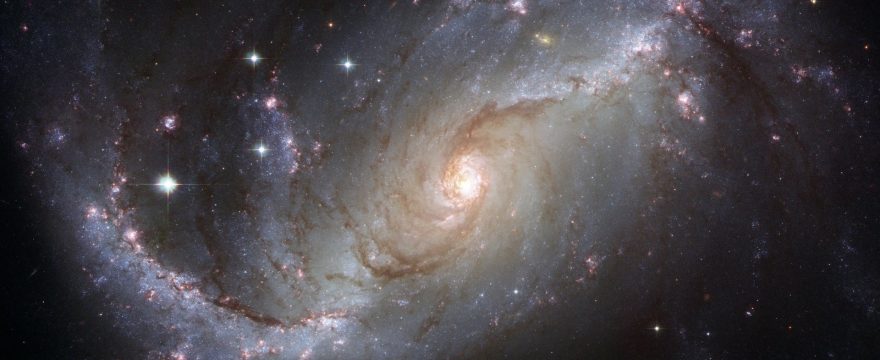Our Universe
The universe is the entirety of all matter, energy, and space that exists. It is estimated to be around 13.8 billion years old and is thought to have originated from a single point in a massive explosion called the Big Bang.
The universe is vast and complex, containing billions of galaxies, each consisting of billions of stars and planets. It is difficult to comprehend the immense size of the universe, but current observations suggest that the observable universe – that is, the portion of the universe that can be seen from Earth – is about 93 billion light-years in diameter. This means that the farthest objects we can see in the universe are about 46.5 billion light-years away.
The universe is expanding at an accelerating rate, which means that the space between galaxies is increasing over time. This phenomenon is thought to be driven by a mysterious form of energy called dark energy, which makes up about 70% of the total energy in the universe.
Another important component of the universe is dark matter, a type of matter that does not interact with light and cannot be directly observed. However, its presence can be inferred through its gravitational effects on visible matter. It is estimated that dark matter makes up about 27% of the total mass-energy of the universe.
The remaining 3% of the universe is made up of ordinary matter – the atoms and particles that make up stars, planets, and all visible objects in the universe.
There are various theories and models that attempt to explain the origins and evolution of the universe, such as the Big Bang theory and inflationary cosmology. Scientists also study cosmic microwave background radiation – the afterglow of the Big Bang – to better understand the early universe and its properties.

In recent years, scientists have discovered numerous exoplanets – planets orbiting other stars – and are continuing to search for signs of life beyond Earth. This research is providing new insights into the potential diversity of life in the universe and helping us to understand our place in the cosmos.
Galaxies in the Universe
Galaxies are some of the most awe-inspiring objects in the universe. They are vast collections of stars, gas, and dust, held together by gravity. The universe is estimated to contain billions of galaxies, each containing billions of stars. Galaxies come in a variety of shapes and sizes, ranging from spirals to ellipticals to irregulars.
Spiral galaxies, such as our own Milky Way, have a distinct structure that includes a central bulge, a flat disk, and spiral arms. Elliptical galaxies, on the other hand, have a more rounded shape and lack the spiral arms of their spiral counterparts. Irregular galaxies, as the name suggests, have a more irregular shape and are often the result of galaxy collisions or interactions.
Galaxies are not evenly distributed throughout the universe, and they tend to cluster together in groups or clusters. The local group, which contains the Milky Way and Andromeda galaxies, is an example of a small group of galaxies. At the other end of the scale, the Coma Cluster contains over 1,000 galaxies.
Studying galaxies provides valuable information about the universe’s structure and evolution. Astronomers use telescopes to observe galaxies in different wavelengths of light, from radio waves to X-rays, in order to better understand their properties and the processes that shape them. The study of galaxies has led to significant discoveries, such as the presence of dark matter and the expanding universe.
Our Galaxy – The Milky Way
The Milky Way is a barred spiral galaxy that contains our solar system. It has a diameter of about 100,000 light-years and is estimated to contain between 100 and 400 billion stars. The Milky Way also has a supermassive black hole at its center, which is believed to be about 4 million times the mass of the sun.

Orion Nebula
The Orion Nebula is a massive, diffuse cloud of gas and dust located about 1,344 light-years from Earth in the constellation Orion. It is one of the most studied objects in the night sky and is visible to the naked eye as a fuzzy patch of light. The nebula is a site of active star formation, and it is estimated to contain over 1,000 young stars. Its striking beauty and scientific significance make it a popular target for astronomers and astrophotographers alike.

Additional information about Universe
One of the most important discoveries in modern astronomy is the idea of dark energy, which was first proposed in the late 1990s. Scientists realized that the expansion of the universe was actually accelerating, which suggested the presence of a mysterious force pushing everything apart. This force was dubbed “dark energy,” and while it is not yet fully understood, it is thought to be a property of space itself.
Another important concept in modern cosmology is the idea of inflation, which proposes that the universe underwent a rapid period of expansion in the first fraction of a second after the Big Bang. This theory helps to explain why the universe appears to be so homogeneous and isotropic, or uniform in all directions.
Recent research has also revealed that the universe is not only expanding, but accelerating in its expansion. This discovery was made possible by the study of distant supernovae and has led scientists to hypothesize that dark energy is responsible for this acceleration.
In addition, scientists have recently discovered the presence of massive black holes at the centers of many galaxies. These black holes are thought to have played a crucial role in the formation and evolution of galaxies and may even help to regulate star formation in their host galaxies.
Finally, there is ongoing research into the nature of the universe’s earliest moments. Scientists are using experiments like the Cosmic Microwave Background Radiation to better understand the universe’s earliest structures, and some scientists are even exploring the possibility of observing the remnants of the universe’s birth in the form of gravitational waves.
Scientific data related to the universe:
- Age and Composition: Scientists estimate the age of the universe to be 13.8 billion years old, based on observations of the cosmic microwave background radiation. The universe is composed of roughly 5% ordinary matter (protons, neutrons, and electrons), 27% dark matter, and 68% dark energy. This distribution of matter and energy is essential in understanding the structure and evolution of the universe.
- Large Scale Structure: The universe is not evenly distributed, but instead, matter is concentrated in a vast network of galaxy clusters, filaments, and voids. These structures form due to the gravitational pull of dark matter and play a critical role in the evolution of galaxies and the growth of cosmic structures.
- Cosmic Microwave Background Radiation: The cosmic microwave background radiation (CMBR) is the oldest light in the universe and was emitted roughly 380,000 years after the Big Bang. The CMBR provides us with a snapshot of the early universe and its properties, including its temperature and density fluctuations. It is considered one of the most critical pieces of evidence supporting the Big Bang theory.
- Neutrinos: Neutrinos are fundamental particles that are produced in the Sun, nuclear reactions, and supernovae. They are incredibly elusive, rarely interacting with matter, and can travel through space at near-light speeds. Scientists study neutrinos to better understand the properties of matter and energy in the universe.
- Gravitational Waves: Gravitational waves are ripples in space-time caused by the acceleration of massive objects. They were first detected in 2015 and have provided scientists with a new tool to study the universe. Gravitational waves allow scientists to observe the universe in a new way, revealing information about black holes, neutron stars, and the early universe.
- Multiverse Theory: The multiverse theory suggests that there may be multiple universes, each with its unique physical properties and laws of physics. While this theory remains speculative, it has gained attention in recent years due to its potential to explain some of the apparent coincidences and fine-tuning in our universe.
- Dark Matter: Dark matter is a hypothetical form of matter that does not interact with light and is only observed through its gravitational effects on visible matter. Despite its invisibility, scientists believe that dark matter makes up roughly 27% of the universe’s total mass. Researchers are actively working to understand the nature of dark matter and how it interacts with other particles.
- Cosmic Rays: Cosmic rays are high-energy particles that originate from outside our solar system. They are primarily made up of protons and atomic nuclei, and their sources are not yet fully understood. Cosmic rays can provide valuable information about the universe’s most energetic processes, such as supernovae and black holes.
- Black Hole Information Paradox: The black hole information paradox is a long-standing theoretical problem in physics that questions what happens to information that enters a black hole. Some scientists believe that the information may be destroyed, while others propose that it may be preserved in the form of Hawking radiation. Resolving this paradox is considered one of the most critical challenges in modern physics.
- Exoplanets: Exoplanets are planets that orbit stars other than our Sun. Since the first discovery of an exoplanet in 1995, thousands of exoplanets have been detected, and scientists are working to better understand their properties and potential habitability.
- Quantum Gravity: Quantum gravity is the effort to merge two of the most fundamental theories in physics: general relativity and quantum mechanics. The unification of these theories is considered one of the most critical challenges in modern physics and could lead to a better understanding of the universe’s earliest moments and its ultimate fate.
- Cosmic Strings: Cosmic strings are hypothetical defects in space-time that are thought to have formed in the early universe. They are believed to be one-dimensional objects that are incredibly dense and may be responsible for the formation of cosmic structures such as galaxies and galaxy clusters. While there is currently no direct evidence for the existence of cosmic strings, their discovery would have significant implications for our understanding of the universe’s evolution.
In summary, the universe remains a vast and complex system, and these cutting-edge scientific data provide a glimpse into the exciting and challenging work that researchers are undertaking to better understand its properties and evolution. As scientists continue to explore the universe, they will undoubtedly make new discoveries that will further expand our understanding of this incredible system.

Leave a Reply